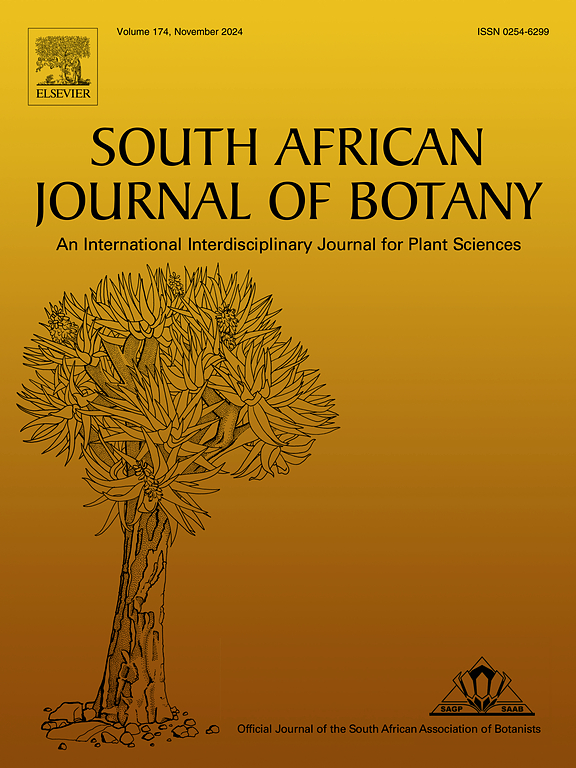Insecticidal and repellent properties of Baccharis salicifolia essential oil against the stored product pest of Neltuma alba, Riphibruchus picturatus (F.) (Coleoptera: Chrysomelidae: Bruchinae): Chemical composition and mechanism of action
IF 2.7
3区 生物学
Q2 PLANT SCIENCES
引用次数: 0
Abstract
The use of essential oils (EOs) represents a promising approach for developing alternatives to synthetic pesticides for pest management in storage facilities has attracted considerable attention due to their demonstrated effectiveness, lower toxicity, and reduced environmental persistence. In this study the EO from Baccharis salicifolia (Ruiz & Pav.) Pers. (Asteraceae) was investigated. A total of twenty-two compounds were identified, with α-phellandrene (a monoterpene) and the sesquiterpenes elemol and spathulenol being the major constituents. The EO extracted from B. salicifolia exhibited strong contact insecticidal activity against Rhipibruchus picturatus (F.), a key pest of Neltuma alba pods under storage conditions. Additionally, the EO demonstrated significant repellent effects against this plague. The study also examined the mechanism of toxicity, revealing that the EO moderately inhibits acetylcholinesterase in vitro, alters the activity of antioxidant enzymes such as superoxide dismutase and catalase, and promotes lipid peroxidation reactions. These biochemical findings were further supported by molecular docking experiments and ADMET database analysis. To the best of our knowledge, this is the first report describing the bioinsecticidal and repellent potential of B. salicifolia EO against the R. picturatus bruchid. The findings underscore its promise as a natural alternative for developing more effective pest control strategies in storage systems.
水杨花挥发油对白檀储存品害虫——画眉鼠的杀避性能:化学成分及作用机理
使用精油(EOs)是一种很有前途的方法,可用于开发用于储存设施病虫害管理的合成农药的替代品,由于其证明的有效性、较低的毒性和较低的环境持久性而引起了相当大的关注。本研究对水杨花(Baccharis salicifolia, Ruiz &;奶油水果蛋白饼)。珀耳斯。(菊科)。共鉴定出22种化合物,主要成分为α-茶树烯(一种单萜)、倍半萜素和spathulenol。在贮藏条件下,水杨花提取物对白Neltuma alba pods的主要害虫——画图鼻螨(Rhipibruchus picturatus)具有较强的接触杀虫活性。此外,EO对鼠疫有显著的驱避效果。本研究还对其毒性机制进行了研究,结果表明,在体外实验中,EO适度抑制乙酰胆碱酯酶,改变超氧化物歧化酶和过氧化氢酶等抗氧化酶的活性,促进脂质过氧化反应。分子对接实验和ADMET数据库分析进一步支持了这些生化发现。据我们所知,这是第一次报道水杨花对野田鼠的生物杀虫和驱避潜力。这些发现强调了它作为一种天然替代品的前景,可以在储存系统中开发更有效的害虫控制策略。
本文章由计算机程序翻译,如有差异,请以英文原文为准。
求助全文
约1分钟内获得全文
求助全文
来源期刊

South African Journal of Botany
生物-植物科学
CiteScore
5.20
自引率
9.70%
发文量
709
审稿时长
61 days
期刊介绍:
The South African Journal of Botany publishes original papers that deal with the classification, biodiversity, morphology, physiology, molecular biology, ecology, biotechnology, ethnobotany and other botanically related aspects of species that are of importance to southern Africa. Manuscripts dealing with significant new findings on other species of the world and general botanical principles will also be considered and are encouraged.
 求助内容:
求助内容: 应助结果提醒方式:
应助结果提醒方式:


